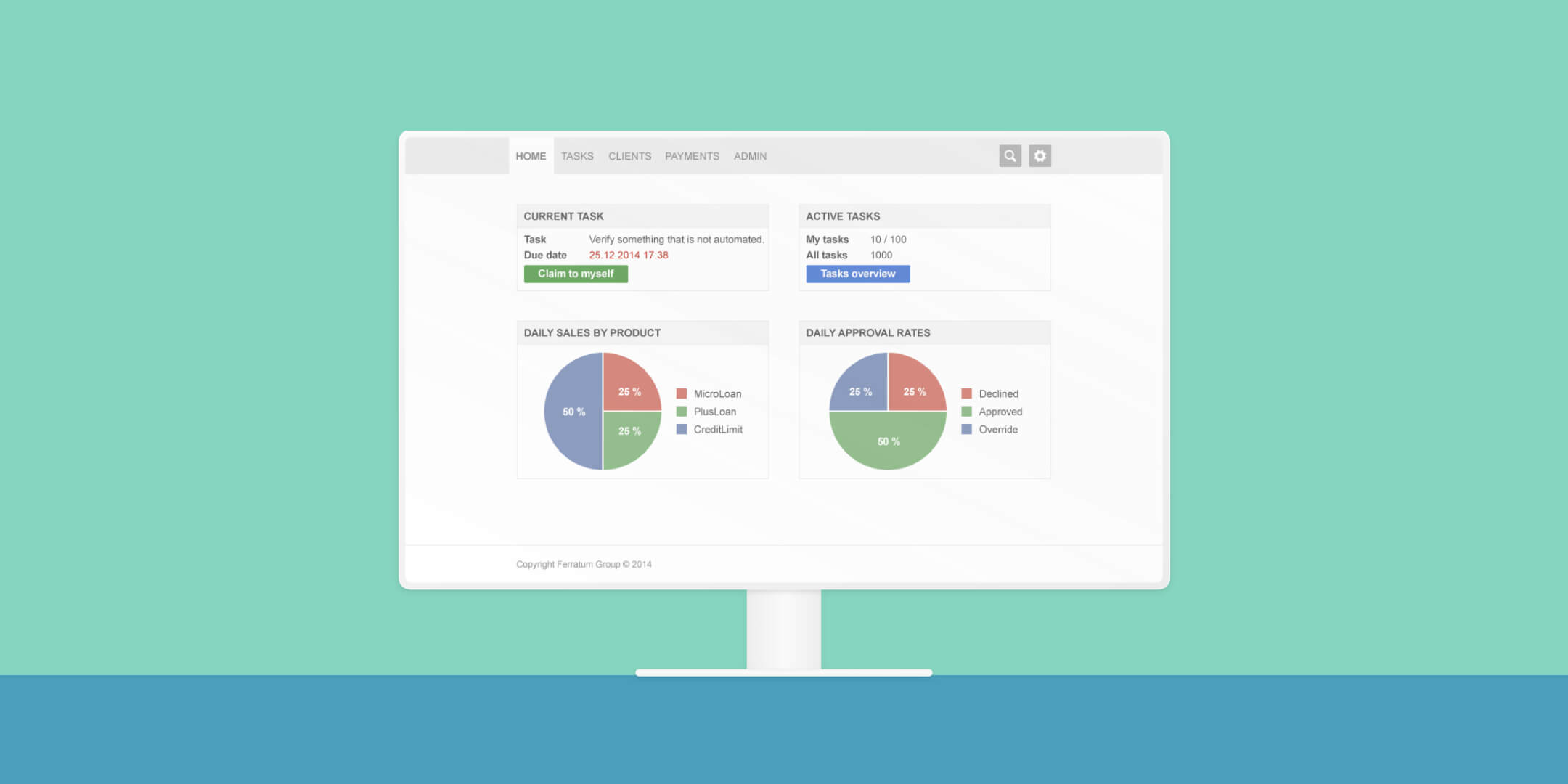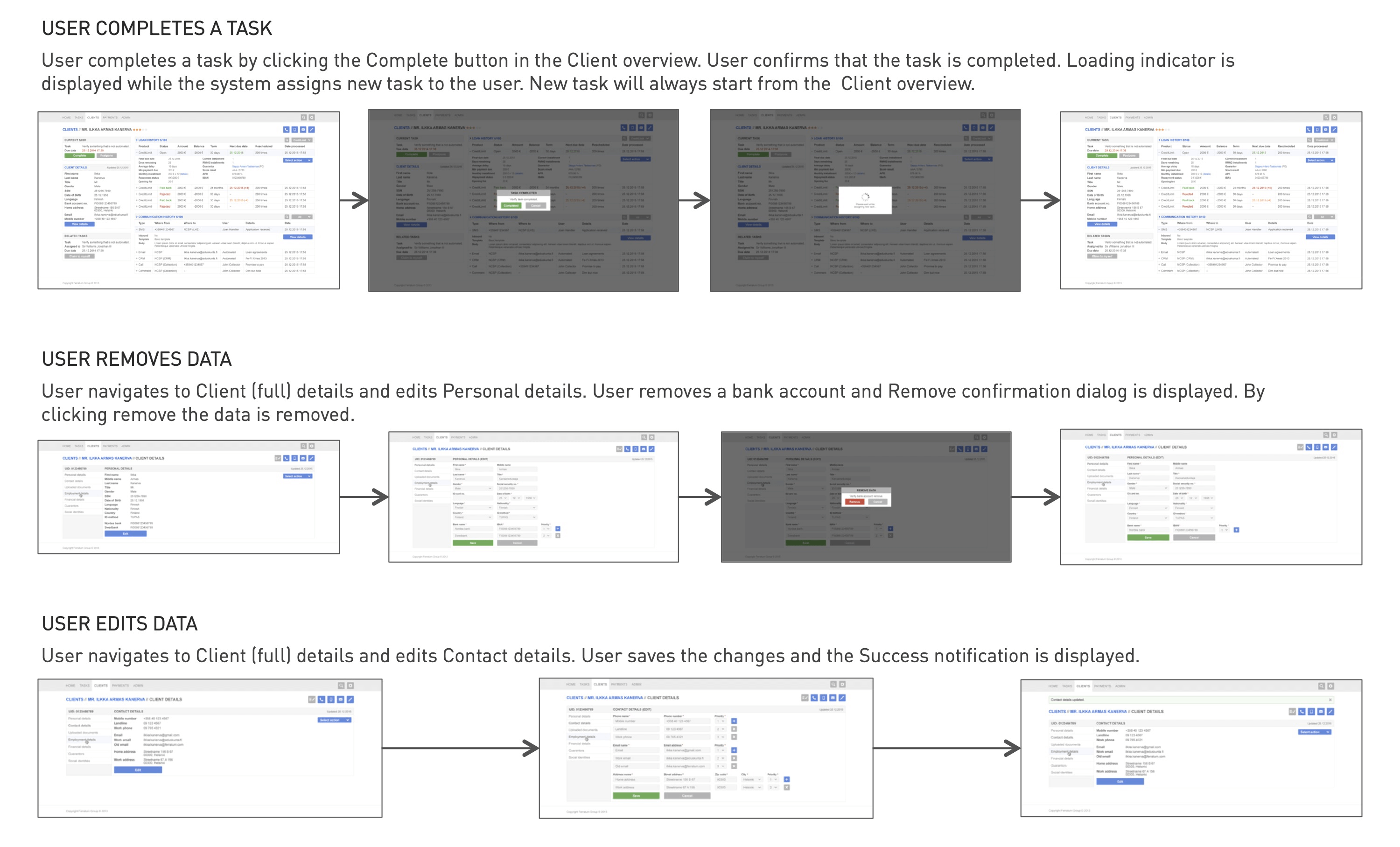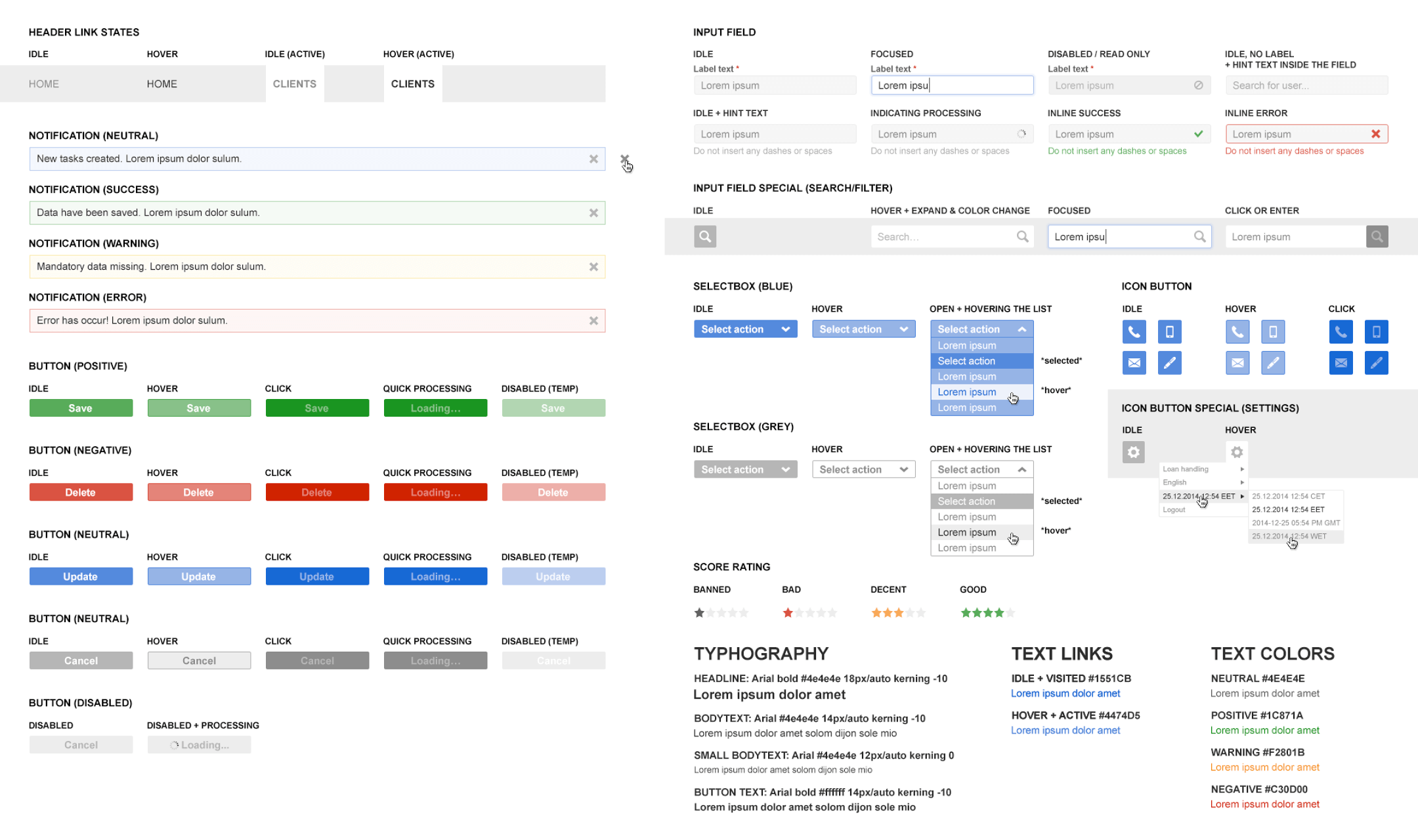Work
Improving productivity of Ferratum's customer service
User-centric approach to identify needs and streamline workflows for enhanced efficiency
Ferratum Group's key internal tool, the Loan Handling System, had become outdated. The company decided to develop a new Customer Service Platform, where I played a pivotal role in ensuring it met customer service needs, optimized workflows, and increased productivity.

Background
Ferratum Group processes tens of thousands of consumer loans each month. Ensuring that the customer service operates efficiently is essential to maintaining high-quality service and employee satisfaction. To support this, the company developed a new Customer Service Platform aimed at boosting both satisfaction and productivity.
Project Team
The core project team included the Head of Operations, the Development Manager, and myself as Design Lead. I leveraged my expertise in user interface design, user-centric methodologies, and behavioral science best practices. Although the project was already well underway when I joined, I quickly recognized that the new platform had inherited flawed design principles from the old system.
Research
The main flaw was that the system's architecture focused on loans rather than customers, leading to issues such as multiple customer profiles. I conducted interviews with stakeholders, including country and marketing managers, and customer service teams across care, sales, loan handling and collections. Observing the team, I noticed some preferred portrait screen orientation to maximize information visibility and reduce scrolling. They preferred seeing key information at a glance over fancy designs.

The new Customer Service Platform was carefully designed and documented to ensure shared understanding and provide clear specifications for developers. These specifications included design artifacts such as sitemaps, workflows, wireframes and visuals.
Digital Service Design
Based on my observations I identified the need for responsive design to support different screen sizes and usage scenarios. Leveraging my research insights and user-centric design expertise, I shifted the system's focus from loans to customership, reducing duplicate information and repetitive views. This made the platform more streamlined and efficient. Every design decision was driven by the goal of improving customer service productivity, with key actions clearly visible and important information highlighted in each view.

Before design systems became standard, a graphical user interface guide (GUI-kit) was created for developers and designers to follow. Developers often turned these into live component libraries – interactive, scalable tools with modular code that could be applied throughout the project, similar to how modern design systems function.
Outcome
The result was a renewed and published Customer Service Platform that extended beyond customer care, integrating sales, loan handling, collections, CRM, and management reporting. The platform tailored content and functionality based on the user's account type. Like an ERP (Enterprise Resource Planning) system, it automated and streamlined customer service tasks, significantly improving daily efficiency.
Reflection
My involvement prevented the new platform from repeating the issues of the previous system. With my experience as a frontend developer, building multiple admin panels, and my user-centric design expertise, I introduced fresh approach that led to a successful outcome, directly benefiting the platform's primary users — customer service. ▪
Methodologies
Digital service design (incl. ux & ui), user centric-design, stakeholder interviews, observing users, system architecture and design & project management.